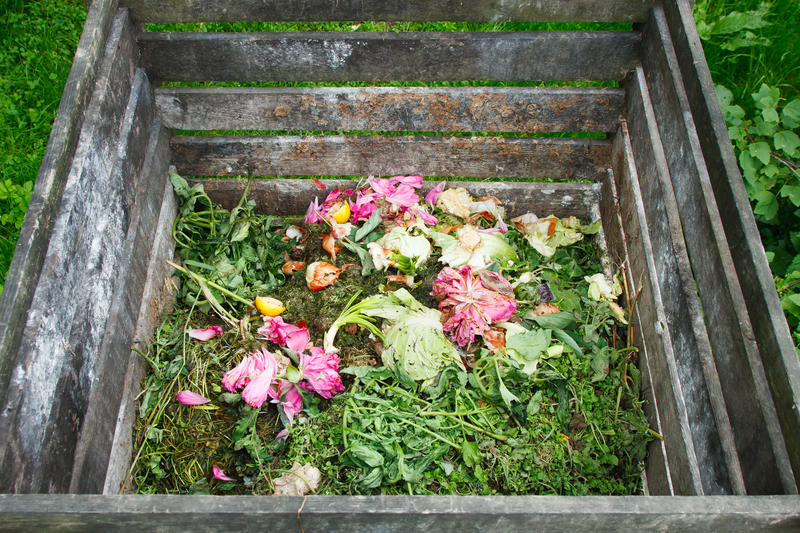Innovate Your Living: Making Your Home Eco-Conscious
In today's fast-paced world, sustainability and eco-friendliness have moved to the forefront of homeowner priorities. Making your home eco-conscious not only contributes to the well-being of our planet but can also result in significant savings on your utility bills. In this article, we will explore various ways to innovate your living space and transform it into an energy-efficient haven.
The Importance of an Eco-Conscious Home
Understanding why an eco-conscious home matters is a crucial first step. As global warming and environmental concerns continue to rise, each small change contributes to a larger impact. An eco-friendly home reduces carbon emissions, conserves water, and minimizes waste, all while promoting a healthier living environment for its inhabitants.

Steps to Make Your Home Eco-Conscious
Evaluate Your Energy Usage
Before diving into large-scale changes, start by evaluating your current energy usage. Consider investing in a home energy audit to guide your renovation efforts:
- Home Energy Audit: A comprehensive assessment of your home's energy consumption and recommendations for improvements.
Adopt Renewable Energy Sources
Renewable energy is at the forefront of sustainable living. Options include:
- Solar Panels: Installing solar panels can significantly cut down your electricity bills and reduce your carbon footprint.
- Wind Turbines: Although typically used in larger spaces, small-scale wind turbines can be an option for suitable areas.
Tip: Check if local government incentives are available for renewable energy installations.
Optimize Heating and Cooling Systems
Heating and cooling account for a large percentage of household energy usage. To make your home more eco-friendly:
- Programmable Thermostats: Use smart thermostats to control your home's temperature efficiently.
- Insulation: Properly insulate your home to maintain temperature levels without excessive energy use.
Water Conservation Techniques
The importance of water conservation cannot be overstated. Implement these techniques to reduce water usage:
- Low-Flow Fixtures: Install low-flow faucets and showerheads to conserve water without sacrificing performance.
- Rainwater Harvesting: Capture and reuse rainwater for gardening and other non-potable uses.
Adopt Sustainable Building Materials
Environmentally Friendly Construction Resources
When renovating or building your home, opt for materials that are sustainable and have a low environmental impact:
- Bamboo Flooring: A rapidly renewable resource that is stylish and durable.
- Recycled Steel: Offers strength and sustainability for structural applications.
Eco-friendly Paints and Finishes
Look for paints and finishes that have low levels of volatile organic compounds (VOCs) to improve air quality and reduce health risks:
- Natural Paints: Derived from natural materials, these paints are non-toxic and better for both human and environmental health.
- Water-based Stains: Opt for stains that are low in VOCs and safe for indoor air quality.
Implement Eco-Conscious Living Habits
Waste Reduction and Recycling
Adopting waste reduction practices is vital for an eco-conscious home:
- Composting: Compost organic waste to reduce landfill dependency and create nutritious fertilizer for your garden.
- Recycling: Implement a comprehensive recycling system for plastics, metals, and papers.
Smart Home Technology
Incorporate technology to boost your home's eco-friendly status:
- Smart Lighting: Use LED bulbs and automated systems to minimize unnecessary energy consumption.
- Energy Management Apps: Apps that track and provide insights into your energy usage can help optimize efficiency.

The Role of Landscaping in Eco-Friendly Homes
Landscaping can contribute to making your home more energy-efficient:
Native Plants and Xeriscaping
Choose drought-resistant plants and native species for your garden. This approach reduces water usage and supports local ecosystems.
Solar Landscaping Lights
Utilize solar-powered outdoor lighting to illuminate pathways and gardens without using grid electricity.
Conclusion
Transforming your home into an eco-conscious sanctuary requires commitment and consideration. By implementing these strategies, you not only improve your living space but also contribute positively to the environment. Innovate your living today for a sustainable future, and relish in the benefits of a greener home.
With the right approach, it is possible to create a home that is not only comfortable and stylish but also eco-friendly and sustainable. Start your journey to a green lifestyle today, and make a meaningful difference, one step at a time.